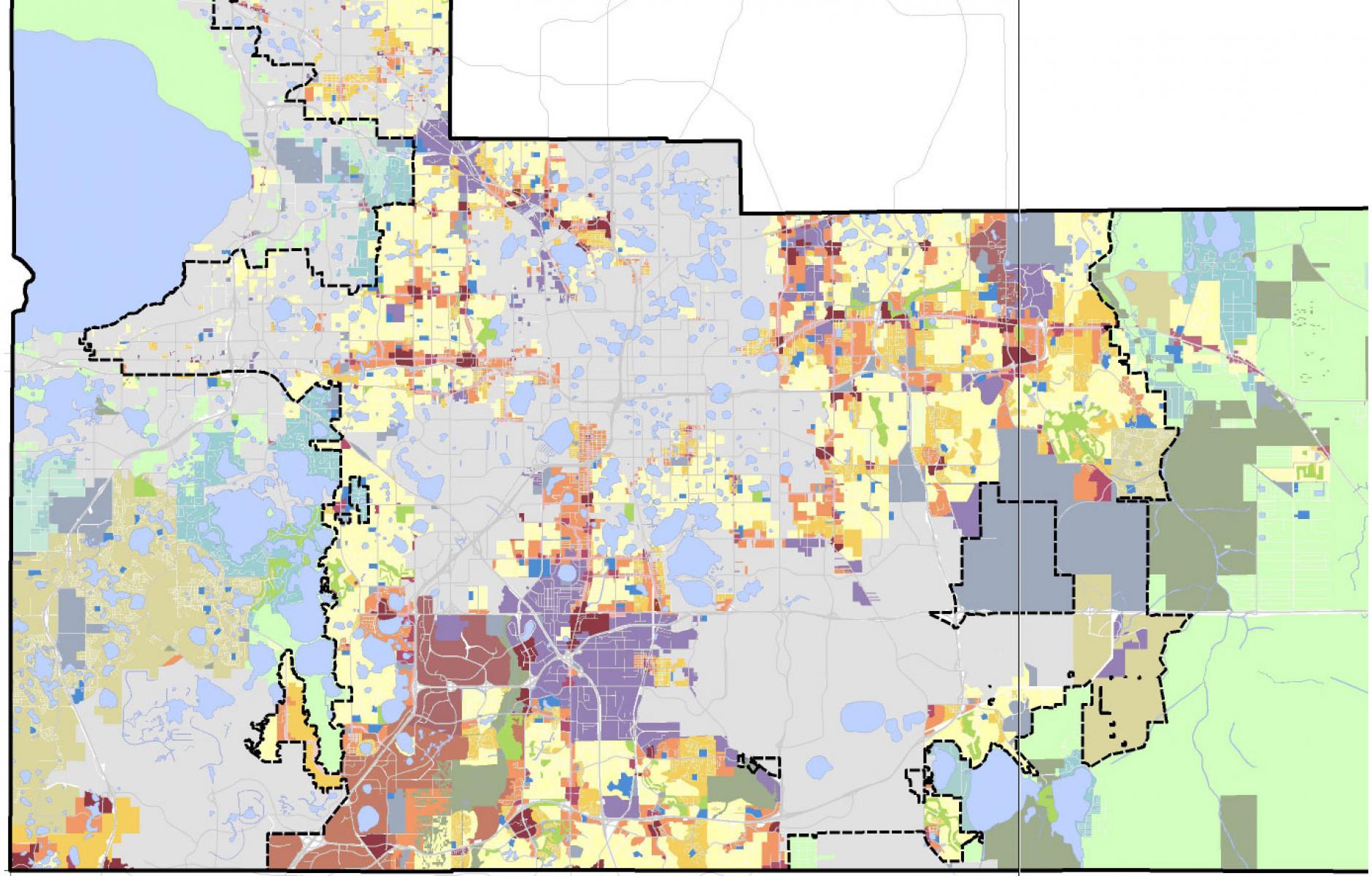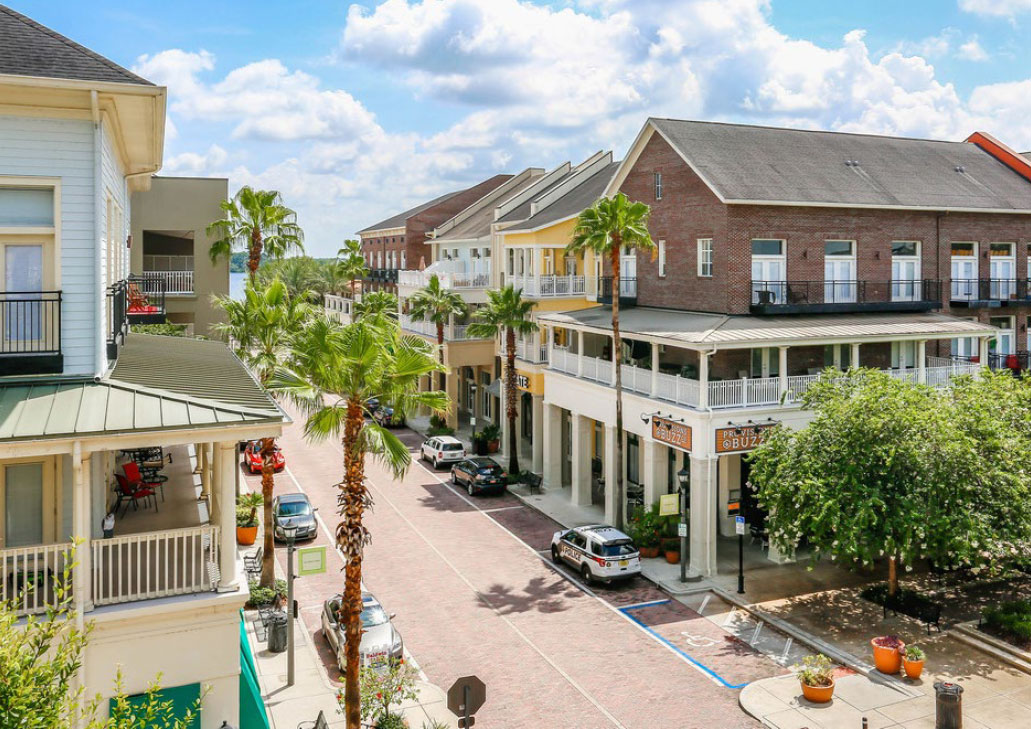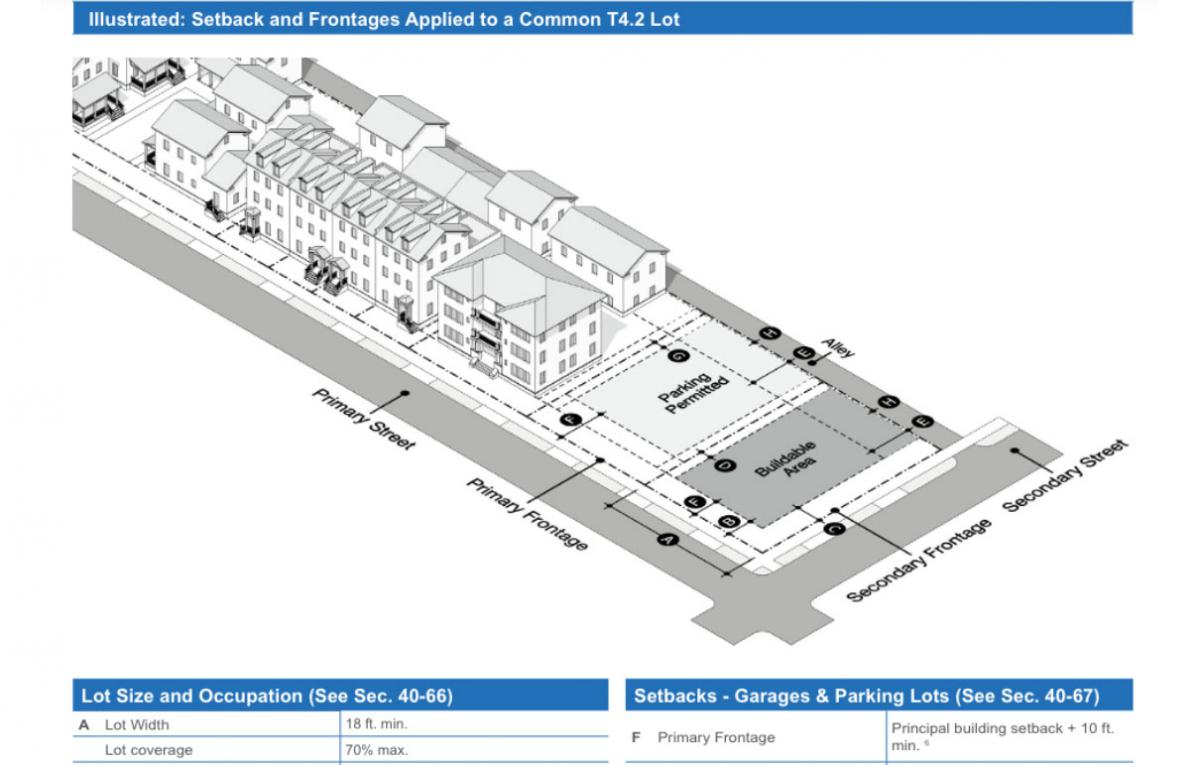
Orange Code adopted to repair Orlando sprawl
The “Orange Code” was adopted in early June for Orange County, Florida—perhaps the largest form-based code (FBC) adopted in the US by population. Orange County, which includes Orlando, simultaneously adopted the Vision 2050 comprehensive plan.
The code covers land containing approximately 900,000 residents in unincorporated areas of Orange County and is designed to accommodate and direct growth toward walkable urbanism. Because the Orange Code does not cover cities, which have separate zoning, the regulations focus mostly on suburban retrofit.
“It could easily be called the largest Sprawl Repair code,” says Matt Lambert of DPZ CoDesign, which co-led the consulting team with Kimley-Horn. “The focus is to redevelop the county’s suburban arterials and collectors to create walkable urban centers connected by urbanized corridors that support public transit—this is 6 percent of the county’s land area.”
The county, which has a population exceeding 1.4 million, has gained more than 200,000 new residents every decade since 1960, and growth shows no signs of slowing down. Orange County is projected to have 2.1 million people by 2050.

Other large FBCs have focused on mostly compact cities, such as Miami 21 (DPZ was the lead consultant) and the Buffalo Green Code. The Orange Code is conceptually based on the DPZ’s SmartCode, using the rural-to-urban Transect, frontage types, and place types to organize the standards.
The Orange Code reduces the overall length of the County’s zoning from 1,200 to 400 pages, Lambert says, and it streamlines development applications and reviews. It also “added a whole lot of development capacity to commercial corridors,” he explains.
About 10 mixed-use, walkable place types—such as urban core, urban center, main street center, traditional neighborhood, tourist activity center, etc.—“are directly intended to repair their suburban sprawl models, and the code supports those by being very context-based,” says Marina Khoury, also of DPZ. “So, for example, parking requirements are tagged to Transect zones, but also may vary by place types.”

The new code still requires off-street parking—albeit credit is given for shared parking and off-street parking, and regulations are tailored to context. Most of the county’s previous development was done through Planned Unit Developments or Planned Developments, which are no longer permitted. Existing PD projects approved through the old system are vested in perpetuity. Still, they are permitted to opt into the new code, “so there is hope that many will, which can improve developments that are incomplete,” Khoury says.
Eliza Harris Juliano, a county resident and a member of the planning team with Kimley-Horn, notes that Orange County established its first rail transit line in 2014. And, the Brightline High Speed Rail service opened in Orlando in 2023 and is expected to extend westward across the County in the coming years, she notes.
The county has been moving towards mixed-use, more connected development for some time, Juliano says, approving what she calls “New Urbanism lite” developments in Horizon West and Avalon Park. The county adopted a FBC for the tourist district in 2017, “which was sort of a pilot project for the wholesale update.”

Juliano spoke to county commissioners as a resident just before the vote. “It will have huge fiscal, social, and sustainability impacts to create a brighter future for us,” she said.
The Orange Code has been in the works for a long time. The process began in 2016, but was put on hold to write the new comprehensive plan, Vision 2050.




